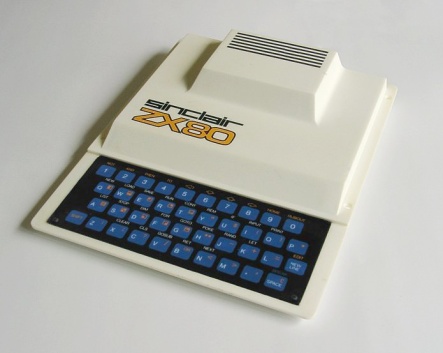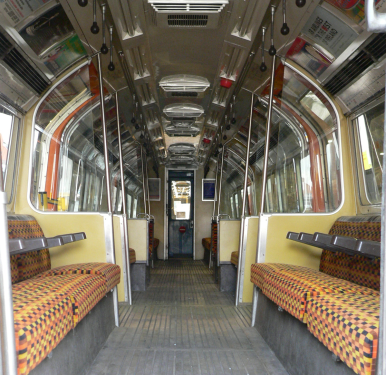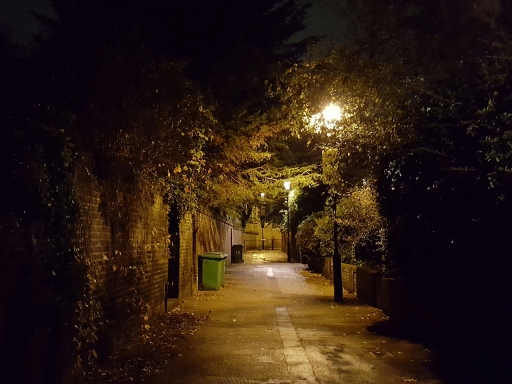Camberwell, 1980. In the cold, dingy attic room of a smog-blackened terraced house, two undergraduates are on the brink of something. They are physics students, although the strange, gaffer-taped structure that fills the room could be mistaken for an art project. A crudely bolted network of steel piping – propped up by beer crates and books – connects a large refrigerator, the workings of a spin dryer, a tangle of wires and a bank of television screens, circuit boards and telephones.
Sitting atop this contraption, as though it were the most natural place to be, is a cat.
The students place the cat, Erwin, inside the refrigerator (which is empty apart from a steel plated lining), type instructions into the modified ZX80 taped to the door’s inside, and slam the door shut. A brief frenzy of bucking and whirring is followed by one almighty jolt – and then silence.
After a few, charged seconds, the students check the fridge. Then, satisfied that there is no trace of Erwin within it, they leave the room – locking the door behind them. Once downstairs, they take a tin of cat food from a cupboard in the kitchen, and step out into the dark, November night.

“Erwin was a little grumpy when we got to Sam’s flat in Highgate”, says Maja Toft, down the phone from Copenhagen. “But otherwise, he seemed fine. We let him out of the exit machine, gave him some dinner, and had him snuggle up with us in Sam’s big bed. He didn’t seem phased to be a pioneer in quantum entanglement travel”.
This is a story of subatomic physics and its potential to open gateways. But it is also a story of music, politics and romance. Maja and her boyfriend Sam Harper had been working on their machine for months, keeping little contact with the world outside college and their makeshift laboratory. But before that?
Dancing.
Maja says they fell for each other in the student bar, to a soundtrack of new wave and synth pop.
“I had grown up loving punk, reggae, all of that. As a young Danish woman, I took London Calling literally. The UK music scene is what brought me to England’s capital. Oh” – she laughs, a soft, warm chuckle that becomes familiar as the call goes on – “and the especial malleability of your city’s subatomic structure, of course”.

As Maja herself admits, had she listened a little closer to the lyrics of The Clash’s album, she might have realised that they painted a less than rosy picture of London and the UK.
By April 1981, Maja and Sam had begun to experiment with using the quantum gateway personally. Meanwhile, just up the road in Brixton, riots had broken out against a back-drop of heavy-handed stop-and-search tactics directed at London’s black population.
White, middle class, and raised in Denmark and the US respectively, Maja and Sam felt inoculated against the issues surrounding the riots. However, says Maja, “My politics were formed in that time. It was so unfair, even as a callow young incomer I saw that. What a struggle it was for some. How easy it had been for me”.

Politics leant their work some urgency. Could instantaneous travel change the world for the better?
But, admits Maja, they had another, less outward-looking motivation.
“It was really just a way to get to each other’s bedrooms quicker”, she laughs. “The journey from Camberwell to Sam’s place in Highgate wasn’t great, especially in winter, especially at night”.

So, they studied. For Maja, Imperial College was a natural fit. It had been an early centre for the study of subatomic properties in uranium (until the nuclear arms race drove the research underground).
But the couple were restless. They found their tutors too mired in theory. Between lectures they spent hours in the pub, hammering out ways to make the new ideas practical.
“It was an exciting time in quantum physics”, Maja says. “Stephen Hawking was our hero, tying together a lot of strands. In terms of portals, The Victorians had done some interesting things, but they were chancers, really. They left little useful science. Einstein, Schrodinger – those guys got us past Newton and blind luck”.
Einstein was uncomfortable with what he termed ‘spooky action at a distance’: quantum entanglement, the idea that subatomic particles can affect one another over distances.
“Spooky action, many-worlds theory: Hawking took them seriously. And we took Hawking very seriously indeed”.

And now, with the help of Maja and Sam’s machine, quantum entanglement was going to change the world.
Maja laughs again, but this time there’s a bitter edge.
“You know, Sam hated that we never managed a two-way machine. That I could get to his bedroom from mine, but not the other way round. I don’t think it was the science that bothered him. I think he just felt cornered.”
For the first time the lightness has left Maja’s voice.
“And – it’s silly – we argued over what to call the thing. I said the Love Walk Generator. Love Walk was a pretty lane in Camberwell that we liked to stroll down in the early days. Spooky Action Machine was Sam’s suggestion. It was certainly catchier. By the time I realised he had suggested it because it abbreviated as SAM, it had stuck.”
There is a silence where the laugh should be.
“I can’t remember whether it was me or Sam who saw the cracks first.”

Cracks?
“Look – it’s hard to talk about, even now. It wasn’t just the falling out of love. There was… things that didn’t make sense. And – god – the nightmares, and the – our skin”.
Another pause.
“It wasn’t ready. The science wasn’t ready. You could say, yes, we achieved what we set out to achieve. But it wasn’t supposed to – no, it wasn’t. It was a failure”.
Sam moved back to the US and they lost touch. Maja hung on in London for a few years before moving back to Copenhagen.
“I’m a materials scientist, now. Sam would find that funny”.
And the machine?
“Oh, you know I don’t know? I’ve wondered about that a lot over the years. I suppose it’s in some basement somewhere, or in a scrap heap. Hey, hopefully someone fixed the fridge up and used it to keep their groceries fresh”.
Maja’s easy chuckle comes rolling down the phone once more.
- Candidate: The Spooky Action Machine
- Type: Quantum Entanglement Device
- Status: Historic

Okay, now, this is really weird. I love POL and have read every post available. I go back frequently and check for new ones. If there aren’t new ones, I look through them all and read sundry ones again. I have read them all at least two or three times. All of them. So today I visit, and I have never seen this one before? It’s dated November 2017. It’s just that you entered the wrong date, right? Supposed to be November 2018… it’s not some sort of Mandela Effect. Because that would be weird.
LikeLike
Weird. It has been there a year, promise!
LikeLike
Hey there
Do POL have an email address or a FB profile to ask a question on?
Many thanks
LikeLike